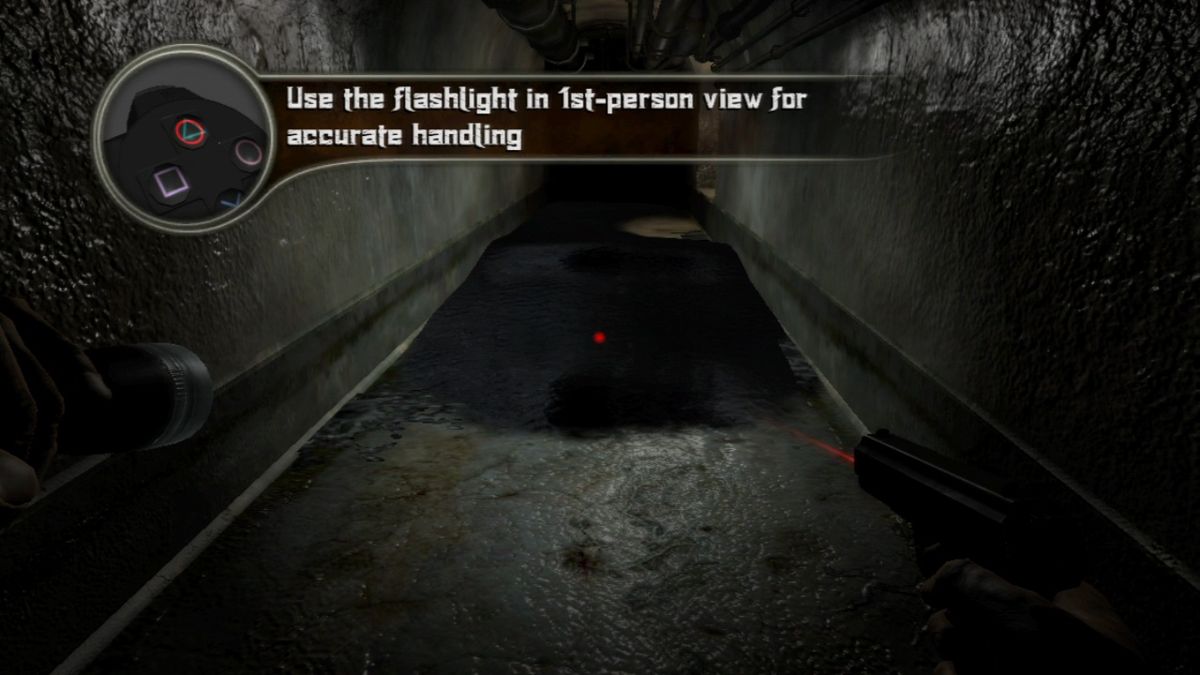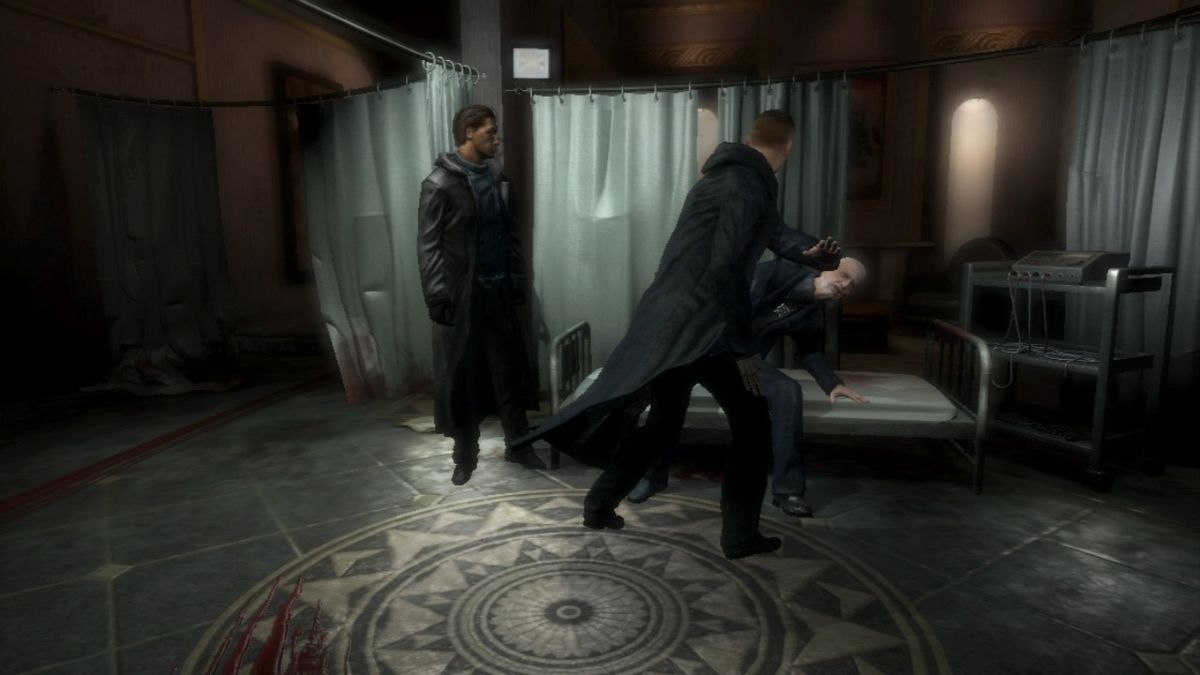Retro Replay Review
Gameplay
The gameplay in Alone in the Dark: Inferno strikes a balance between classic survival-horror mechanics and modern quality-of-life enhancements. The full 360-degree camera control in third-person view grants players unprecedented situational awareness, allowing for smoother navigation through tight corridors and sudden encounters. Coupled with fine-tuned movement and aiming, every confrontation with the game’s supernatural foes feels more deliberate and responsive than in the 2008 original.
Inventory management has been overhauled to be far more intuitive, reducing downtime spent fumbling through items and weapons. On-screen tips now appear contextually, guiding new players through combat sequences or puzzle objectives without breaking immersion. This accessibility upgrade ensures that both series veterans and newcomers can focus on exploration and atmosphere rather than struggle with cumbersome menus.
Vehicle sequences also benefit from improved car dynamics and handling, transforming previously awkward driving sections into tense, adrenaline-fueled escapes. The 59th Street level tuning refines enemy placements and environmental hazards, challenging players to adapt their strategies. Spectral Vision has been retuned as well, revealing hidden clues and thinning the veil between worlds, which enriches puzzle-solving while maintaining the series’ trademark unpredictability.
One of the most exciting additions is the new action sequence in Episode 6, where players come face-to-face with a previously unseen enemy. This set piece injects fresh energy into the late game, combining high-speed chase elements with supernatural terror. The scene’s dynamic pacing and revamped controls ensure it stands out as a highlight, rewarding those who have mastered the improved mechanics.
Graphics
Alone in the Dark: Inferno’s visual presentation has been given a careful polish that elevates the game above its 2008 counterpart. Textures are sharper, and character models possess greater detail in facial expressions and clothing. Ambient lighting and real-time shadows cast by flickering lamps and burning vehicles deepen the horror atmosphere, making exploration more foreboding.
The 360-degree camera system not only improves gameplay but also allows players to appreciate the updated environments from any angle. Whether sneaking through crumbling tenements or racing down neon-lit avenues, the world feels more cohesive and alive. Subtle environmental effects, such as drifting mist and debris kicked up by speeding cars, add dynamic layers to each scene.
Spectral Vision graphics have been meticulously tuned to reveal hidden glyphs, enemy auras, and puzzle elements with stark, ghostly clarity. The contrast between the real world and the spectral overlay is sharper, helping players differentiate threats and secrets at a glance. This visual clarity enhances immersion without compromising the series’ eerie tone.
Vehicle exteriors and interiors benefit from enhanced reflections and grime details, making each ride feel gritty and authentic. The 59th Street area, in particular, shines with improved street textures, neon signs, and environmental set dressing. This level tuning brings renewed vibrancy to an area that previously felt undercooked, transforming it into a memorable urban battleground.
Story
Alone in the Dark: Inferno retains the core narrative of investigators Edward Carnby and Emily Hart as they delve into the mysteries of Derceto Manor and the urban ruins of New York City. The plot weaves supernatural folklore with modern conspiracy, plunging players into a world where every shadow could hold a malevolent force. The enhanced edition preserves the original’s tense pacing while smoothing out narrative hiccups.
The reintroduction of a new action sequence in Episode 6 also brings fresh narrative beats by unveiling a hitherto unseen enemy and hinting at deeper layers to the overarching mythos. This surprise twist not only rewards longtime fans with new lore but also motivates new players to piece together clues left throughout earlier chapters. Dialogue and cutscenes have been tightened, making character motivations clearer and boosting dramatic tension.
Contextual on-screen tips further integrate with the story by highlighting interactive objects and key plot items without resorting to intrusive tutorials. Players can engage more naturally with environmental storytelling elements—crumpled diary pages, abandoned photographs, and spectral echoes—while staying focused on the narrative thread. These refinements preserve immersion and reinforce the game’s haunting ambiance.
Character interactions feel more grounded due to improved cinematic framing made possible by the free camera. Subtle gestures, expressions, and lighting shifts in cutscenes convey emotional stakes more effectively. Whether racing against time to prevent a supernatural catastrophe or piecing together the identity of a sinister new foe, the storyline remains engaging from start to finish.
Overall Experience
Alone in the Dark: Inferno stands as a thoughtful reimagining of the 2008 cult classic, offering both technical refinements and fresh content that justify revisiting the title. Enhanced camera control and fine-tuned mechanics make exploration and combat smoother, while the revamped inventory and on-screen tip system reduce frustration and maintain narrative flow. Car chases and environmental puzzles feel equally revitalized by improved handling and level adjustments.
Graphically, the update is subtle but effective—bringing out details that were previously muted, refining spectral effects, and polishing environmental textures. The marriage of modern lighting techniques with the game’s Gothic aesthetic amplifies the horror and suspense, creating a more immersive world without sacrificing the series’ moody atmosphere.
The narrative gains new depth through a surprise Episode 6 encounter, reinforcing the game’s central mysteries and introducing fresh stakes. Stronger character animations, better cutscene direction, and seamlessly integrated tips all contribute to a smoother, more captivating experience. Whether you’re returning to Derceto Manor or tackling the streets of New York for the first time, the story feels tighter and more compelling.
Overall, Inferno is a welcome update that respects the original vision while addressing its shortcomings. Fans of the franchise will appreciate the targeted enhancements and new content, and newcomers will find a more approachable entry into the series. This edition proves that even a decade-old title can be reborn with the right balance of preservation and innovation.
 Retro Replay Retro Replay gaming reviews, news, emulation, geek stuff and more!
Retro Replay Retro Replay gaming reviews, news, emulation, geek stuff and more!









Reviews
There are no reviews yet.